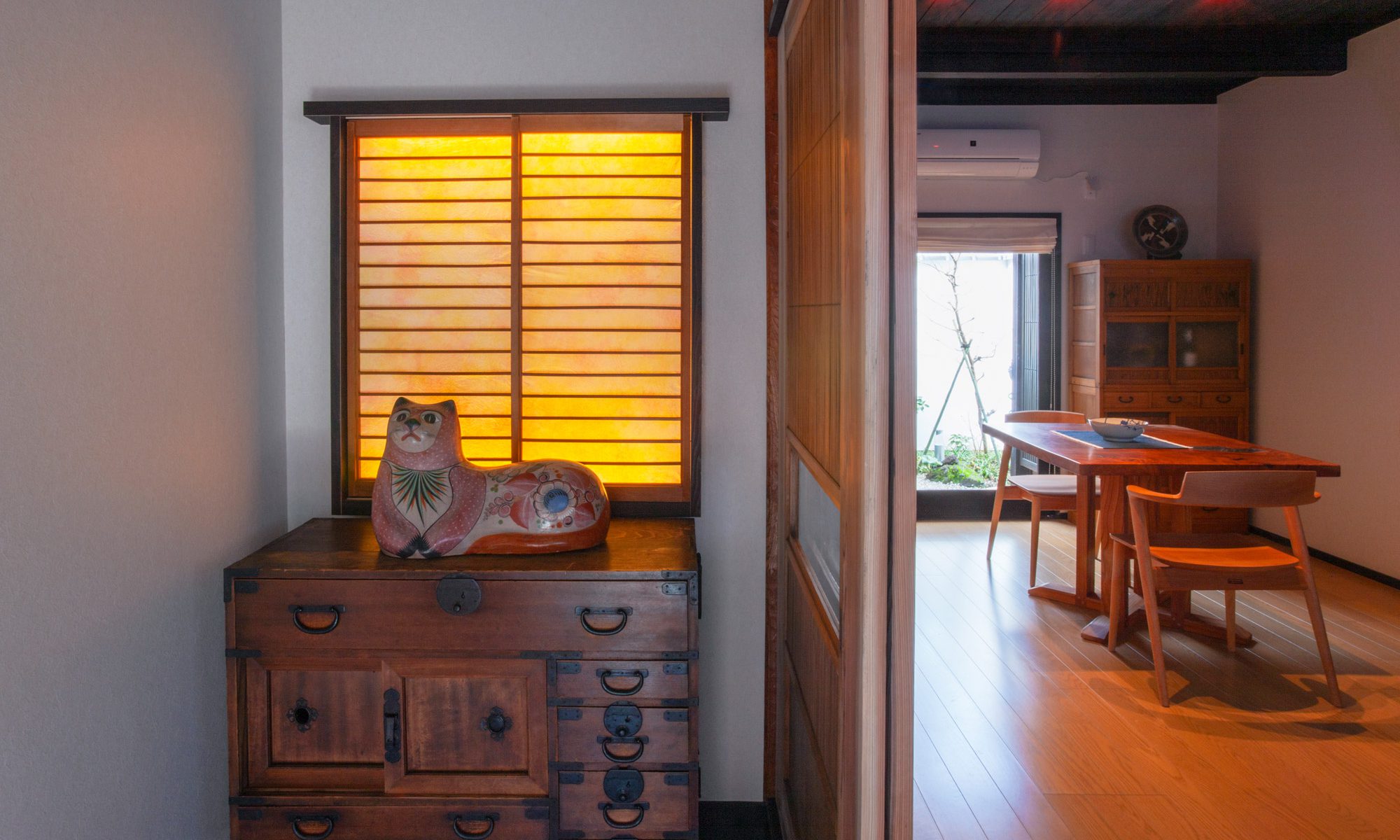Kyoto
The ancient city of Kyoto has an excellent public transport system that offers easy access to all major sights. The streets are laid upon a grid, making walking a great way to see the city as well.
There are seventeen World Heritage Sites among the 1,500 Shinto shrines and Buddhist temples in this historic city, embodying a legacy of Japanese culture and tradition. Homes to tea ceremony, calligraphy, ink-brush painting and martial arts teachers dot the city’s byways. In the northwest section known as Nishijin reside some of the country’s renowned dyers and weavers of kimono and obi.
Kenkun House
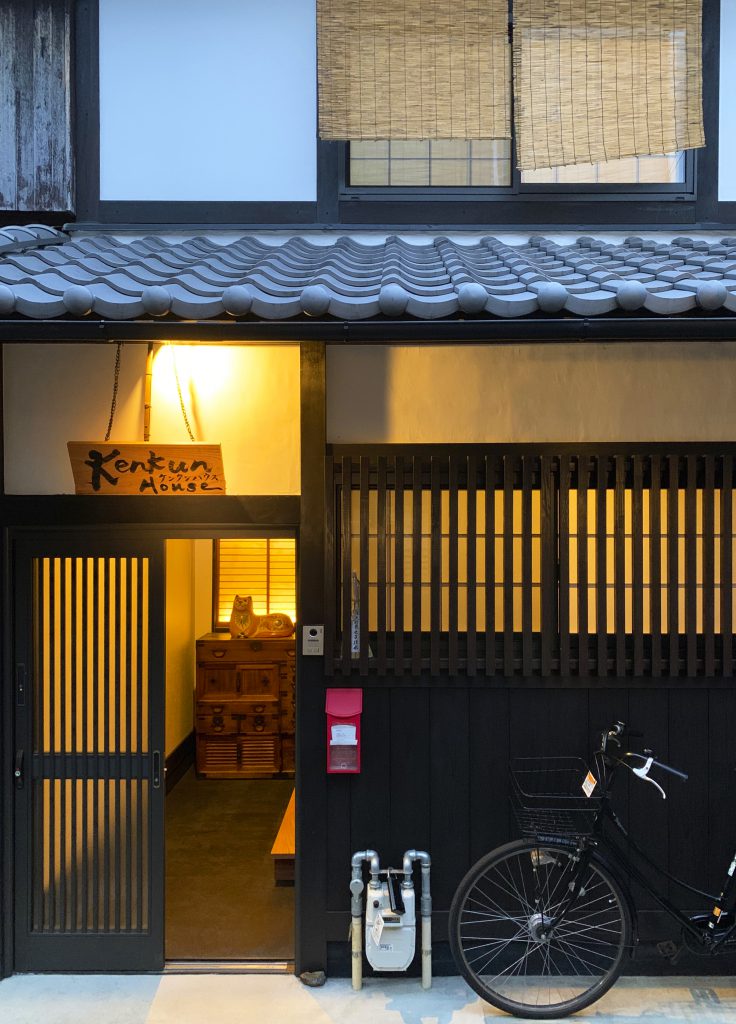
Also in Kyoto’s Nishijin area is Kenkun House, a newly established guesthouse midway between the Zen temple of Daitoku-ji and Kenkun shrine, a seven-minute walk south of Kitaoji street. Located within walking distance are Imamiya Shrine, Kitano Tenmangu Shrine and the Golden Pavilion (Kinkaku-ji). With easy access to all areas via bus and subway, Kenkun House offers a comfortable retreat after a day of sightseeing and shopping.
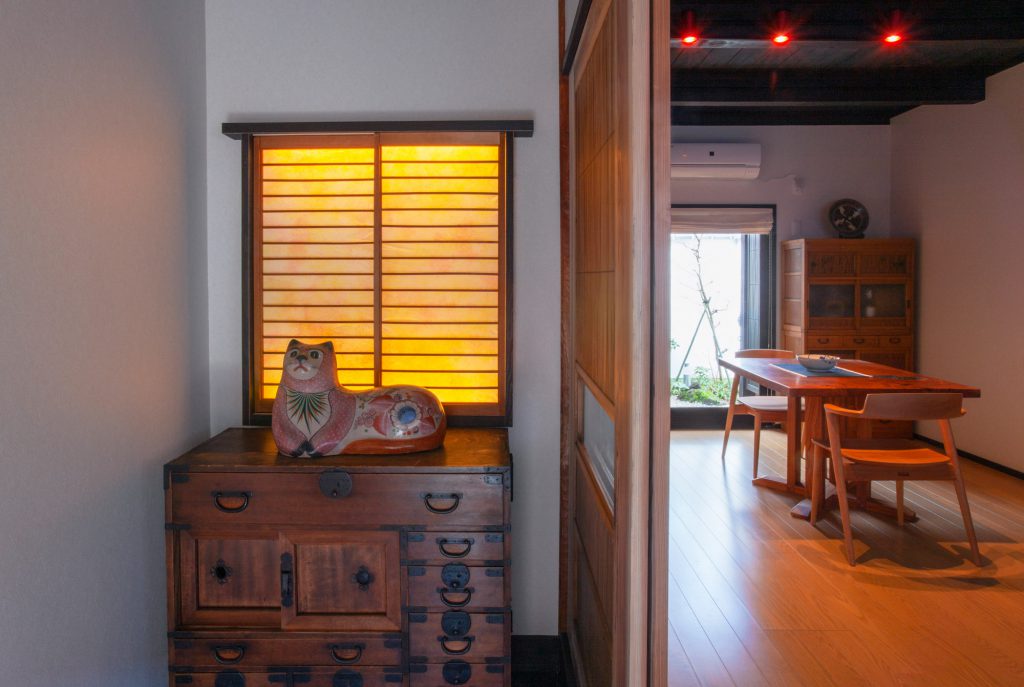
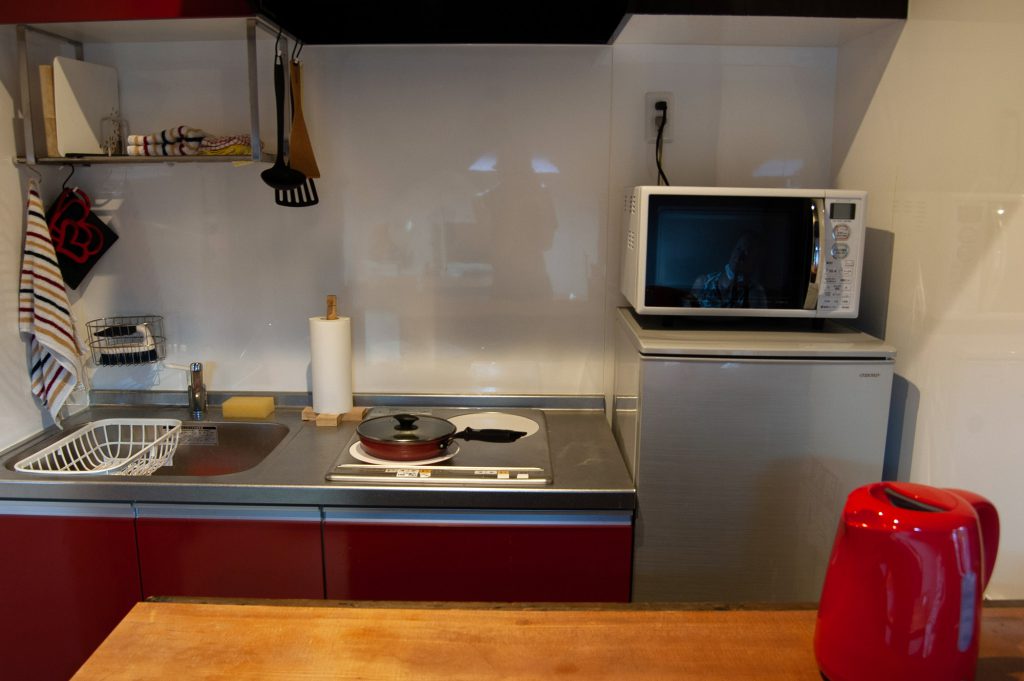

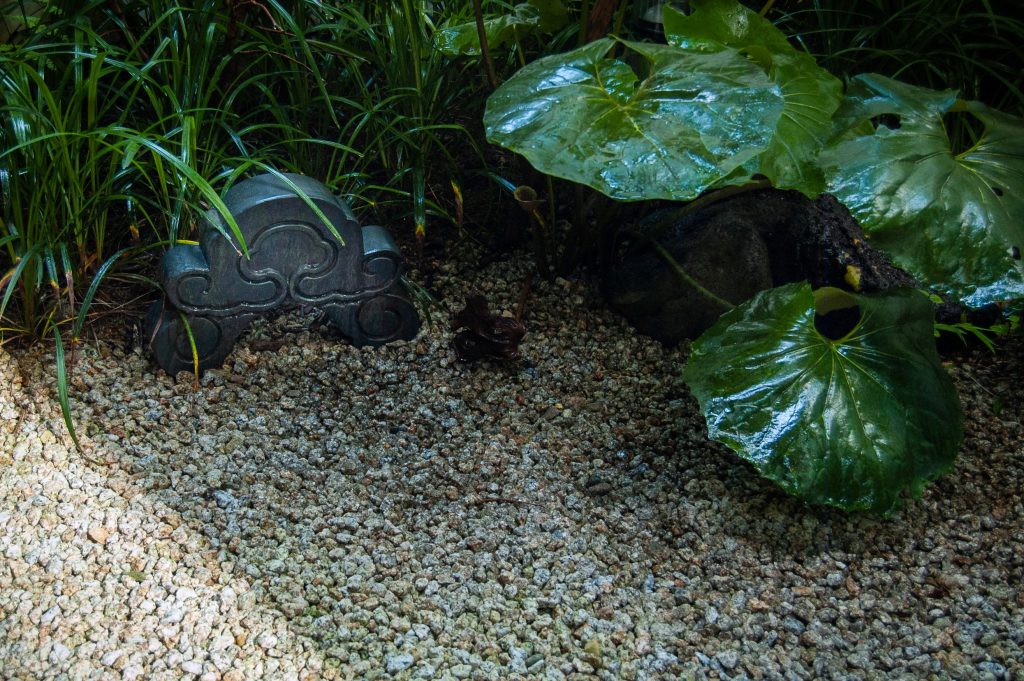

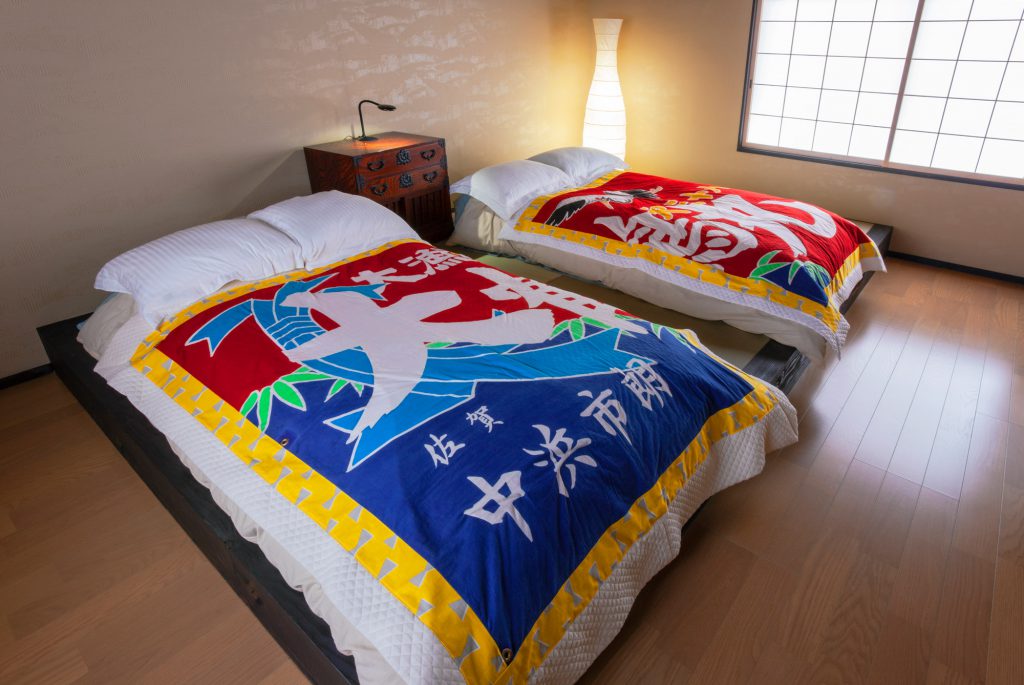
The original house was constructed 95 years ago and renovated in 2019 to accommodate two visitors. An extra futon is available, as well as a sofa bed for a child. The dining area offers a Japanese garden view and is fitted with handmade furniture designed by a local wood craftsman. Folk art hangs on the walls. A deep-tub Japanese bath for soaking and relaxing faces the garden. The kitchen is equipped with an IH stove and combination microwave/oven unit. A selection of cups and dishes by the local potters of Kyoto, Shigaware and Mashiko fill the cupboard. On the second floor, Serta memory-foam mattresses on elevated tatami mats ensure restful sleep. Supermarkets and convenience stores are nearby, so buying prepared food and a little sake or wine for dinner is easy, as is finding ingredients for making your own meals.
Features
- Free wi-fi
- Free utilities
- No cleaning charge
- Japanese-style bath
- Pocket garden
- Kitchen
- All-new furnishings
- Heated flooring downstairs
- Washing machine
Learn about the folk craft items in Kenkun House.
Rates & Booking
For rates and booking, please see the Airbnb listing, [KEKH] Beautifully-renovated Kyoto Machiya for Two.
House Rules
Following a few simple house rules will help ensure a pleasant stay for all our guests.
Map
- Google Map of waypoints and nearby restaurants
- Download a printable map of waypoints
About the Owner

Kenkun House is owned and operated by local author, guide and interpreter, Judith Clancy. A resident of Kyoto for fifty years, Clancy’s interest in the traditions of the ancient capital has led her to study and write about traditional music, tea ceremony, and ikebana flower arrangement.
On a crisp, clear day in January 1970, I came to Japan and never left. Two years of paramedical work in South Korea as a Peace Corps volunteer gave me the chance to travel. While walking the streets of Kyoto, I saw well tended gardens in homes and in temples, abloom with camellias and full green leafy trees — in mid-winter. The Kamo River was speckled with snow white wintering gulls and native egrets, and the occasional turquoise-colored kingfisher. I became enchanted with the life of the city and knew I wanted to live here.
—Judith Clancy
To establish Kenkun House, Clancy worked closely with local craftspeople and artisans to renovate an old machiya townhouse, furnish it and register it officially as a private lodging.
Day-to-day management of Kenkun House is handled by Matatabi, with booking available through Airbnb.
